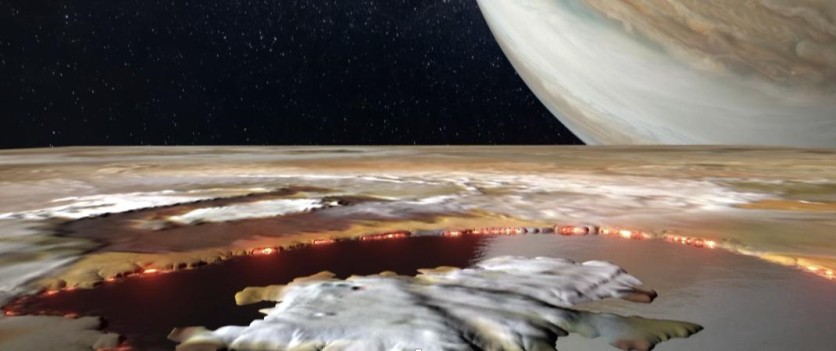NASA's Juno spacecraft has delved deeper into the enigmatic lava lakes of Jupiter's hottest moon Io, shedding new light on the volcanic activities there.
The latest insights, captured by Juno's Jovian Infrared Auroral Mapper (JIRAM) instrument, highlighted the widespread presence of these fiery features across Io's surface.

NASA Juno Delves Into Lava Lakes on Jupiter's Moon Io
Io, first observed by Galileo Galilei in 1610, has long fascinated astronomers because it is the most volcanically active body in our solar system. NASA's Voyager 1 mission in 1979 captured the first volcanic eruption on Io, sparking subsequent missions that revealed additional volcanic plumes and lava lakes.
Scientists posit that Io, which stretched and squeezed like an accordion by nearby moons and Jupiter itself, is the most volcanically active world in the solar system.
However, despite various theories about the types of volcanic eruptions on its surface, limited supporting data is available. During its close encounters with Io in May and October 2023, Juno provided unprecedented infrared imagery with its suite of instruments, including JIRAM.
This advanced technology allowed scientists to observe bright rings surrounding numerous hot spots on Io's surface, indicating the presence of extensive lava lakes within caldera-like structures.
In the area of Io's surface in which the researchers have the most complete data, around 3% of it is reportedly covered by one of these molten lava lakes.
JIRAM's detailed observations also offered insights into the dynamics beneath Io's surface. The infrared images revealed that the lava lakes exhibit a distinctive structure, with a central crust surrounded by walls that may rise hundreds of meters high.
This configuration prevents lava from spilling over the edges, suggesting a complex interaction between magma upwelling and crustal deformation.
The Formation of Lava Rings
According to Alessandro Mura, a Juno co-investigator, the most common type of volcanism observed on Io involves large lava lakes where magma periodically rises and falls.
The formation of lava rings around these lakes resembles features seen in Hawaiian volcanoes, indicating similarities in geological processes despite Io's extreme environment.
Further analysis of JIRAM data from subsequent flybys in late 2023 and early 2024 will provide deeper insights into Io's volcanic processes. Scott Bolton, principal investigator for Juno, emphasized the importance of these findings in enhancing the understanding of Io's dynamic geology.
He highlighted JIRAM's role in ongoing efforts to map and monitor volcanic activity across Io's poles, which remain largely unexplored. Juno's recent flybys, including its 62nd encounter with Jupiter and Io, continue to yield valuable data.
Future missions scheduled for July 2024 aim to explore Jupiter's complex dynamics further, leveraging Juno's capabilities to uncover more mysteries of Io and its volcanic landscape.
"The observations show fascinating new information on Io's volcanic processes. Combining these new results with Juno's longer-term campaign to monitor and map the volcanoes on Io's never-before-seen north and south poles, JIRAM is turning out to be one of the most valuable tools to learn how this tortured world works," Bolton said in a press statement.
The team's findings were published in the Nature Communications Earth and Environment journal.

![Apple Watch Series 10 [GPS 42mm]](https://d.techtimes.com/en/full/453899/apple-watch-series-10-gps-42mm.jpg?w=184&h=103&f=9fb3c2ea2db928c663d1d2eadbcb3e52)



